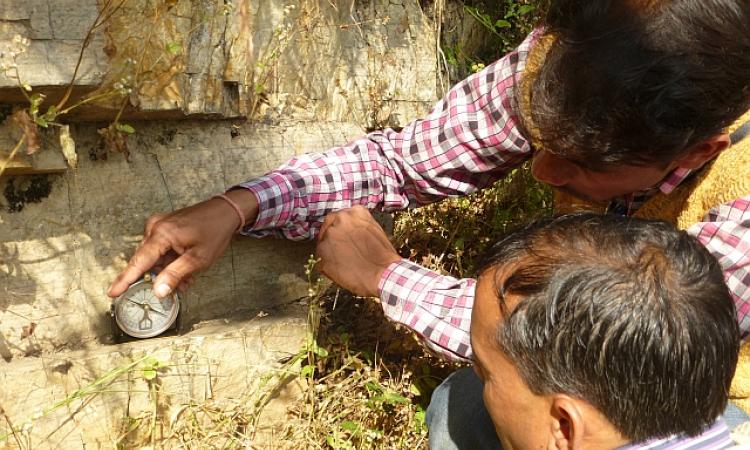
Hydrogeology has, before this, been considered a highly specialised field known only to dedicated academics. Today, this arcane science is being studied by villagers and development workers across India's mountain regions. The reason for this surge of interest? It is, quite simply, a matter of life and death.
Mountain regions do not have the luxury of large aquifers from which to suck up fossil water through wells. Instead, they are dependent on the munificence of naturally occuring springs. Springs are the outlets through which rainwater that has percolated into the surrounding rocks emerges again into the open. These, protected by tradition, have served the land well so far.
However changes in landuse, increasingly erratic rainfall patterns and increasing demand, has led to an epidemic of dying springs. Across the Himalayas, the Western Ghats and the Eastern hills, springs are drying up.
The older approach to soil and water conservation concentrated on the valley (also known as a watershed) as a hydrological unit but this does not work with the highly localised springs. This is even more true in the geologically complex Himalayas. The pressure they are subject to by continental drift has led to the rocks being folded and twisted in tortured ways. This means that the rocks may slope in directions absolutely different from that of the surface. The only option is to focus interventions that seek to increase recharge by first accurately identifying the recharge areas of springs. This is where hydrogeological training for villages comes into the picture.
In the Central Himalayas, the Central Himalayan Rural Action Group (CHIRAG ) has been working on spring conservation. In the video below, Bhupal Bisht speaks of this endeavour and how he goes about it.
The immediate result, as Bhupal says, is villages taking ownership of their springs, being informed about the nature and behaviour of their water sources, and caring for these in an effective manner.
The long term prospects are even more exciting. The traditional measures of spring conservation have depended on giving them 'sacred' status. The side-effects of these have meant the exclusion of Dalits, menstruating women, and a dependence on rituals to restore flow. Learning that geology, and not a temperamental goddess, governs the discharge of a spring may prove to be liberating. Necessary negotiation among villages to implement conservation measures may also resolve old disputes.
Studying rock patterns today may well lead to a social revolution tomorrow.
/articles/studying-springs-matter-life-and-death